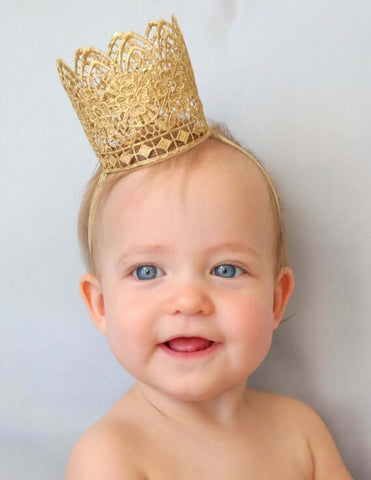Tatsächlich möchte ich wissen, dass mein Baby satt und nicht satt ist. Das ist wirklich nicht schwierig. Viele Mütter denken überhaupt nicht darüber nach. Solange das Baby voller Energie, glücklich und krank ist, hat es keine Probleme. Aber diese „Hingabe“-Mütter sind anders. Engagierte Mütter gestalten das Leben ihres Babys sehr behutsam. Wenn Sie also wissen möchten, ob Ihr Baby satt ist, schauen wir uns Folgendes an.
Erstens: Schauen wir uns an, wie groß der Bauch des Babys ist. Es gibt ein Spektrum an der Größe des Magens, und im Grunde wird auch die Anzahl der Mahlzeiten des Babys gezählt;
- Die Größe des Magens eines Neugeborenen beträgt etwa 5-7 ml;
- Die Größe des Magens eines 3 Tage lang geborenen Babys beträgt etwa 22-27 ml;
- Die Größe des Magens eines nach 7 Tagen geborenen Babys beträgt etwa 45-60 ml;
- Die Magengröße des Babys beträgt bei Vollmond etwa 80-150 ml;
Zweitens: Wir alle wissen, dass Größe und Gewicht des Babys gut wachsen, wenn es satt ist. Im Gegenteil, wenn das Kind nicht satt ist, wird das Wachstum von Größe und Gewicht beeinträchtigt. Daher ist die Wachstumskurve das beste Maß dafür, ob das Baby satt ist oder nicht. Die Wachstumskurve ist die einfachste, intuitivste und wissenschaftlichste Methode und die größte Erfindung der Weltgesundheitsorganisation. Solange das Baby auf der Wachstumskurve stetig voranschreiten kann, bedeutet dies, dass das Baby kein Problem mit der Nahrungsaufnahme hat; Wenn die Eltern die Wachstumskurve wirklich nicht verwenden, verwenden Sie die folgenden Zahlen, um die grundlegende Wachstumsrate Ihres Babys zu verstehen, wie zum Beispiel:

- Die tägliche Gewichtszunahme eines 0-3 Monate alten Babys beträgt etwa 30 Gramm;
- Die tägliche Gewichtszunahme eines 3-6 Monate alten Babys beträgt etwa 20 Gramm;
- Die tägliche Gewichtszunahme eines 6-12 Monate alten Babys beträgt etwa 10 Gramm;
-
2 Jahre alt – kleine Kinder mit einer Gewichtszunahme von etwa 2 kg pro Jahr;
Drittens: Auch über den täglichen Milchbedarf können Eltern messen, ob das Baby genug zu essen hat. Der tägliche Milchbedarf verschiedener Altersstufen ist wie folgt:
-
0-12 Monate alt: Die tägliche Milchmenge beträgt etwa 600-1000 ml;
-
12–24 Monate alt: Die tägliche Milchmenge beträgt etwa 400–600 ml;
-
2–8 Jahre alt: Die tägliche Milchmenge beträgt etwa 400–600 ml;
-
9–18 Jahre: Die tägliche Milchmenge beträgt etwa 720 ml;
-
Viertens: Wenn das Baby genug isst, kommt es zu einem relativ ausgewogenen Urinieren und Stuhlgang, sodass der Körperflüssigkeitshaushalt auch ein Maß dafür ist, ob das Baby genug zu essen hat, wie z. B. die Anzahl der Wasserlassen des Babys in verschiedenen Altersstufen:
-
Die Anzahl der Wasserlassen am ersten Tag der Geburt beträgt etwa 1 Mal;
-
Die Anzahl der Wasserlassen am zweiten Tag der Geburt beträgt etwa 2-3 Mal;
-
Die Häufigkeit des Wasserlassens beträgt am dritten und vierten Tag der Geburt etwa das 4- bis 6-fache;
-
Die Anzahl der Wasserlassen pro Tag beträgt nach dem fünften Tag der Geburt etwa 6-8 Mal;
Da die Stuhlfrequenz, die Merkmale und die Gewichtsvariabilität jedes Babys relativ groß sind, handelt es sich nicht um ein primäres Maß.
Fünftens: Um zu messen, ob ein Baby satt ist oder nicht, kann es einige Sättigungssignale weitergeben, z. B. wenn das Baby aktiv die Brustwarze oder den Schnuller lockert, sich die Gesichts- und Handmuskeln allmählich entspannen, es nach dem Essen satt wird und ruhig schlafen kann usw. , aber diese Das Signal weist keine ausreichende Spezifität auf und kann als Referenz verwendet werden












